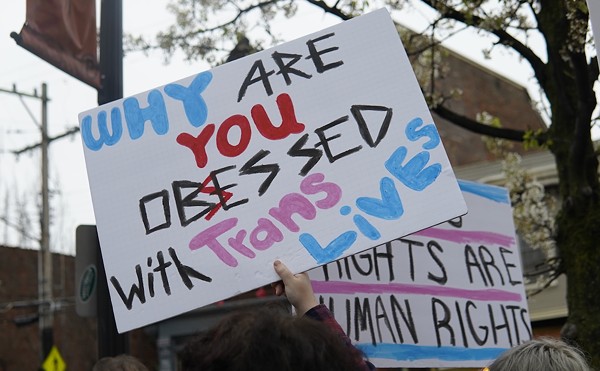After 50 years of city-building by the numbers, are Americans getting the kind of places they deserve to live in?
The answer is yes, according to James Howard Kunstler, a prominent and outspoken critic of American urban design.
We live in suburbs hostile to pedestrians, work in buildings not worth saving and get our daily dose of the natural world with "nature Band-Aids," little strips of shrubbery stuck into corners of our cities as a weak substitute for what we paved over.
"I'm not sure we deserve to be in better places," Kunstler says.
Kunstler delivered this message Nov. 15 to University of Cincinnati architecture students during a bitingly funny lecture about the mistakes built into American urban design.
Americans had a lot of bad experiences with cities during the Industrial Revolution, he says. Cities were often overcrowded, dirty and noisy. We came away from this urban experience wanting something else — "the little cabin in the woods." The trend basically represents the frontier experience, surrounded by nature. The pattern began in the Civil War, when Americans began moving to railroad suburbs such as Riverside in Chicago.
With no automobiles, the suburbs were pedestrian-oriented places where many people built large houses designed to be self-contained spaces for an entire extended family.
But after World War II, we optimistically threw away our collective knowledge on how to build cities centered around the interaction of people. Roads and cars became the most important factor in urban design. Pedestrians took the back seat with architecture as chain stores and cookie-cutter homes reproduced themselves across America. It is design by the numbers.
"We've been swindled into becoming part of the transport system of Wal-Mart," Kunstler says.
Kunstler first addressed these issues in The Geography of Nowhere, a 1993 primer on American urban mediocrity.
People need to understand that cities aren't just places to live but are living organisms, Kunstler says. The American city, he argues, is often missing a key organ — a quality "public realm," the places where we interact with strangers outside of our homes. These streets, parks and promenades are the "physical container of our civic lives," Kunstler says.
Anyone who's traveled to Europe knows how attractive and useful these places can be, from public parks with elaborate fountains to squares to generous, shaded sidewalks. Munich, leveled during World War II, rebuilt its sidewalks with a designated path for cyclists, then protected cyclists and pedestrians from traffic with a line of trees and on-street parking.
The public realm shouldn't be confused with "open space" or "green space," which Kunstler says are meaningless terms. Too often open spaces in cities are meaningless spaces at random spots, poorly designed cartoon reproductions of the woods.
Likewise, the spiffy-clean monoculture of the suburbs sends the message that there was no past here and will be no future here, according to Kunstler. This effects its inhabitants, just as living in Paris or living in a ghetto will affect a person.
"(American suburbs) are tremendous generators of anxiety and depression," Kunstler says.
The suburban environment, he says, hurts teenagers the most. Take Columbine, Colo., for example.
Garages are often a neighborhood's most prominent feature.
"The country home is now becoming an industrial loading dock," Kunstler says.
These suburban mansions are perfect for the tons of toilet paper, milk and other groceries we buy in bulk at a mega-store.
If these places are so bad, why do people move to them? Kunstler says those who want new homes have few options.
But modern suburbia, dependent on cheap oil, has a shaky future, he says. Even if global politics don't derail cheap oil, there's only so much oil on the planet.
"It has the potential for being a real goddamn mess," Kunstler says.
There are places, such as Harbortown in Memphis, that are trying to incorporate good design into existing cities. But it will take a lot of these successful communities to erase our "not-in-my-backyard" fears of what's going to be built next door.
"We have no faith in our culture to deliver the future," Kunstler says.





